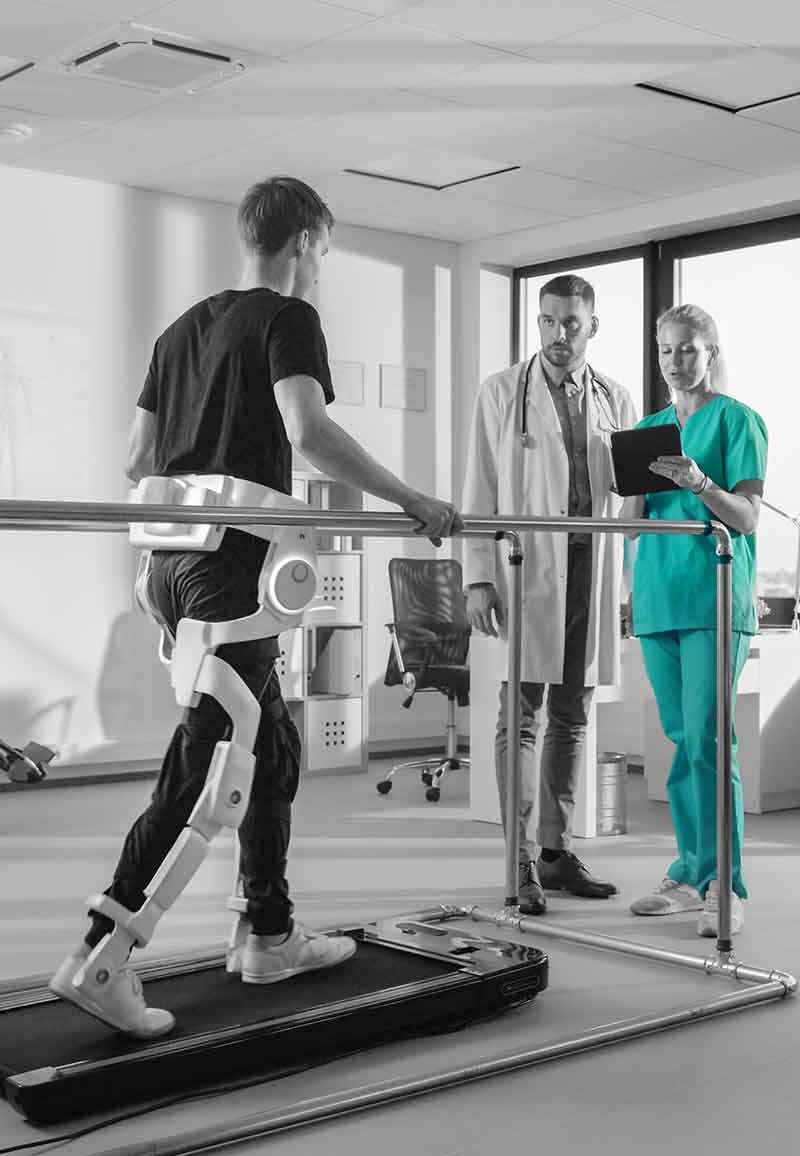

OPPORTUNITIES
OPPORTUNITIES
Opportunities
We continue, always, to look for qualified partners: both universities and technology companies that would be interested in exploring opportunities with us. Our goal is to work with companies / universities who are developing technologies that are assisting those living with physical disabilities in their daily living needs.
Of course, we believe that no technology should hit the market until the community that will use the technology tests the technology. Thus, if you are an individual living with a physical disability and would be interested in testing any of the new technologies in development, we welcome your participation.
For more information, please reach out directly to Diane Nahabedian.

What Areas Are We Working In?
Robotics
Assistive robotics may include such technologies as exoskeletons, smart wheelchairs, and 3D prosthetics, as well as devices to assist with visual and hearing impairments. Even autonomous cars are a technology that could be a hopeful reality in the not-so-distant future for those who are blind and low vision, and those who have mobility
disabilities that prohibit driving. Part of the necessity for assistive robotics is the lack of human caregivers for the increasing aging and disabled population that need support. Assistive robotics could potentially reduce the stress on primary care givers while providing independence and improve the quality of life for those who need the help. At Envisioning Access, we are engaging with companies looking at robotics that will assist in daily living for those who may need assistance opening a door, getting out of bed or getting to a meeting 20 miles from home.
AI
AI is everywhere. Speech recognition software, Ring video doorbells, and robot vacuum cleaners all depend on AI. At Envisioning Access, we are looking to the future of AI to power robotics, and mixed reality to make technology do what our clients need to be truly independent. Let’s face it –
many of us would enjoy a robot that took care of the dirty dishes, mowed the lawn and cooked dinner!
Speech recognition systems can enable individuals with mobility impairments to control their computers and effectively communicate. This could not be done without AI. Those with visual or hearing disabilities also depend on AI text-to-speech and speech-to-text software as alternative types of communication. Many of the robotics under consideration at Envisioning Access use AI to function and perform tasks that allow individuals to meet daily living needs seamlessly, and then go the next step to help them find ways to gain meaningful employment, access education or alleviate isolation.
As an organization looking at all companies and research dedicated to making the world more accessible, we are committed to understanding how AI fits into that scenario, and how it will be used for the betterment of our constituency. With our long and unique experience in supporting those with disabilities, we draw on a powerful knowledge base that serves as a springboard to exploring the range of new possibilities this technology may offer.
New Frontiers – Endless Possibilities
Extended Reality (XR) including Augmented/Virtual Reality (AR/VR)
If used correctly, AR and VR can reduce or even eliminate inherent biases, create new channels of communications and improve opportunities for access. What is XR exactly and why is Envisioning Access exploring this technology? First, an explanation of what makes up XR:
XR covers three different modalities
- Virtual reality (VR) inserts individuals inside a 360° simulated environment where they can practice skills, converse with avatars (an icon or figure representing a particular person in video games, internet forums), and interact with realistic objects within an entirely safe, distraction-free, fully immersive setting.
- Augmented reality (AR) overlays the real-world environment with interactive digital elements to add detail and enhance the learning experience. At a very basic level, think Snapchat filters, or Pokémon Go, then extrapolate this concept to more sophisticated in-headset learning experiences where choices might appear over an instrument or a trip hazard might be hidden in a scene. The real world does not disappear like it does in a virtual reality experience.
- Mixed reality (MR) blends the physical and digital worlds using both VR and AR, including hardware and graphics. Digital and real-world objects can interact with each other in real time, in a sort of “hybrid reality.”
This technology is still relatively new and much is to be explored. However, it is also a technology that has endless possibilities. At Envisioning Access, we think that XR will be a way to bring the world to those with disabilities. The hope is that as the technology improves, barriers faced daily by those with disabilities could be eliminated. Through voice activation in virtual reality, individuals can learn and experience new things. For instance, one can climb a mountain in virtual reality or visit a foreign city without leaving home. Students may be able to use virtual reality to explore career options that are new to them or they did not know existed. Currently, companies around the globe are providing training opportunities in this technology. For Envisioning Access, we look at XR as an exciting and new frontier.


